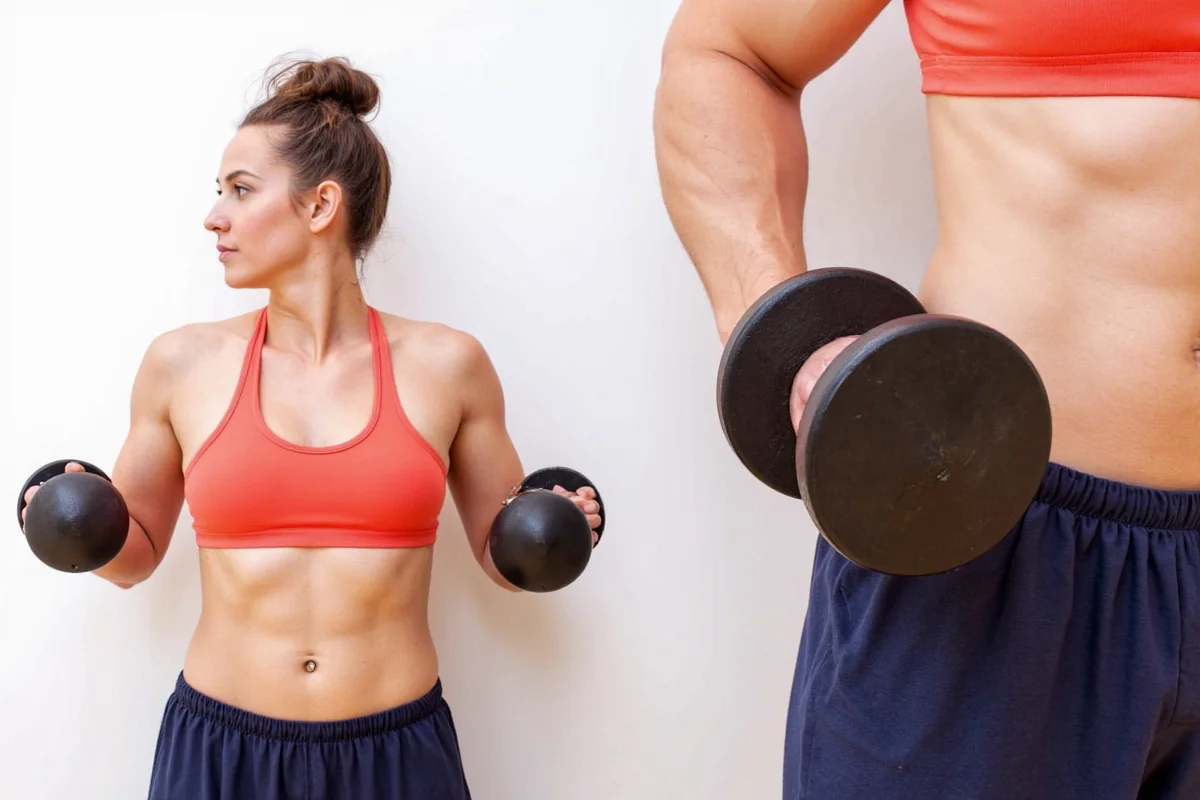Dumbbell rows are a highly effective strength-training exercise that target the back, shoulders, and arms. To perform them correctly: place one knee and hand on a bench, keep your back flat, pull a dumbbell toward your hip using your back muscles, then lower it with control. Repeat on both sides for balanced development.
Benefits of Dumbbell Rows
Dumbbell rows engage multiple muscle groups and improve functional strength. They're essential for building a strong, well-proportioned upper body.
- Builds muscular strength in the lats, rhomboids, and rear delts
- Improves posture by strengthening postural muscles
- Enhances core stability due to unilateral loading
- Promotes muscle symmetry when performed with proper form
- Supports injury prevention by balancing pushing and pulling movements
How to Perform Dumbbell Rows: Step-by-Step
Proper Setup
Start by placing a flat bench at a stable height. Use a dumbbell that allows full control—beginners should start light.
Execution Steps
- Position yourself with your right knee and right hand on the bench, left foot firmly on the floor.
- Grasp a dumbbell in your left hand with an overhand grip.
- Keep your back straight, core braced, and spine neutral—avoid rounding or arching.
- Pull the dumbbell straight up toward your lower rib cage, leading with your elbow.
- Squeeze your shoulder blade at the top of the movement.
- Lower the weight slowly to full extension without swinging.
- Complete desired reps, then switch sides.
Common Mistakes to Avoid
- Rounding the back: Increases injury risk; maintain a neutral spine.
- Using momentum: Swinging reduces muscle engagement; focus on slow, controlled motion.
- Lifting with the arm: The back should drive the movement, not the bicep.
- Shrugging the shoulders: Keep shoulders down and away from ears.
- Narrow range of motion: Fully extend and retract to maximize muscle activation.
Variations of Dumbbell Rows
Adjusting form and equipment can shift muscle emphasis and suit different fitness levels.
| Variation | Muscles Emphasized | Difficulty Level | Equipment Needed | Best For |
|---|---|---|---|---|
| Bent-Over Dumbbell Row | Lats, traps, rear delts | Intermediate | Dumbbells, flat bench (optional) | Overall back thickness |
| Incline Dumbbell Row | Rhomboids, mid-traps | Beginner | Incline bench, dumbbells | Posture correction |
| Pendlay Row | Upper back, lats | Advanced | Olympic bar or dumbbells | Explosive strength |
| Seated Cable Row (Dumbbell Alternative) | Mid-back, biceps | All levels | Cable machine | Constant tension training |
The data shows that bent-over and incline variations activate distinct areas of the back musculature. Unilateral exercises like dumbbell rows produce greater muscle recruitment due to increased core stabilization demands. Advanced lifters benefit from explosive forms like the Pendlay row for power development.
Training Recommendations
For optimal results, integrate dumbbell rows into your weekly routine based on goals.
- Hypertrophy (muscle growth): 3–4 sets of 8–12 reps, 60–90 seconds rest
- Strength: 4–5 sets of 4–6 reps, 2–3 minutes rest
- Endurance: 2–3 sets of 15+ reps, 30–60 seconds rest
Perform 2–3 times per week with at least 48 hours between sessions targeting the same muscle groups.
Frequently Asked Questions About Dumbbell Rows
What muscles do dumbbell rows work?
Dumbbell rows primarily target the latissimus dorsi, rhomboids, trapezius, and posterior deltoids. Secondary muscles include the biceps, forearms, and core stabilizers, which engage to maintain balance during the unilateral movement.
Are dumbbell rows better than barbell rows?
Both have benefits. Dumbbell rows allow independent arm movement, correcting imbalances and reducing injury risk. Barbell rows let you lift heavier loads for maximal strength. Choose based on your goals—dumbbells for symmetry and joint safety, barbells for pure strength.
Can beginners do dumbbell rows?
Yes, dumbbell rows are beginner-friendly when performed with proper form. Start with lighter weights (5–10 lbs) and focus on mastering technique. Using an incline bench can reduce lower back strain and make execution easier for new lifters.
How heavy should my dumbbell row weight be?
Select a weight that challenges you within your target rep range while maintaining strict form. For men, beginner weights often range from 20–30 lbs; women from 10–20 lbs. Progress gradually as strength improves—aim for a 10–20% increase over 4–6 weeks.
Why is my lower back sore after dumbbell rows?
Lower back soreness usually indicates poor form—likely excessive spinal flexion or inadequate core bracing. Ensure your back stays neutral and engage your core throughout. Reduce weight and consider performing the exercise on an incline bench to minimize lumbar strain.










 浙公网安备
33010002000092号
浙公网安备
33010002000092号 浙B2-20120091-4
浙B2-20120091-4